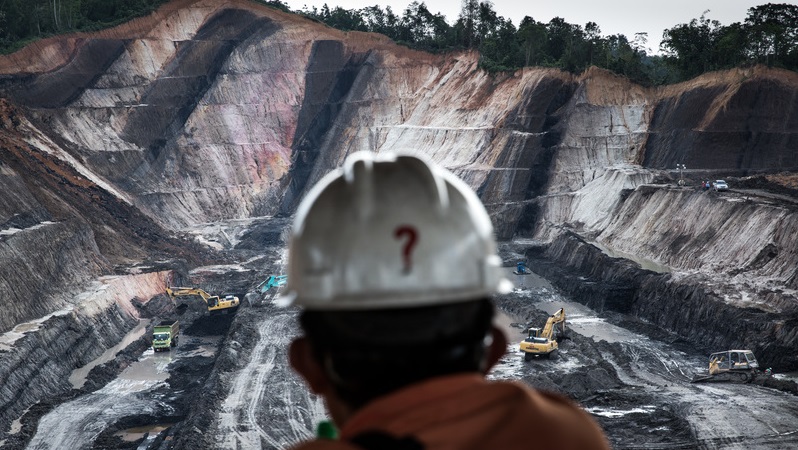The Indonesian government has released an updated 2030 climate plan and long term strategy that indicate the country’s reliance on coal will continue well into the 2050’s.
In a 156-page long term strategy document submitted to the UN, it outlines three pathways including a “low carbon scenario compatible with the Paris Agreement”.
Even under this pathway, the most ambitious of the three, the amount of coal used for primary energy will continue to grow until at least 2050.
While renewables share of electricity generation will grow under this pathway to 43% by 2050, coal will still provide 38% of the country’s growing electricity needs. Methane gas (10%) and biofuels (8%) make up the rest.

Indonesia’s electricity generation by source over time. (International Energy Agency)
Under this scenario, the government claims that 76% of coal-fired power plants will be equipped with carbon capture technology, making them “zero-emissions”.
Experts question whether this technology will be able to capture all a coal power plant’s emissions in a cost-effective way.
Today, producing electricity with coal and carbon capture technology is generally more expensive than producing it with renewable energy, according to analysis by the International Energy Agency.
Record-breaking rain fills Chinese subway, drowning twelve people
Putra Adhiguna, a Jakarta-based researcher from the Institute for Energy Economics and Financial Analysis, told Climate Home News it was a “long shot”.
Indonesia is the world’s second-biggest coal-producing country and its coal industry is politically powerful.
President Joko Widodo’s right-hand man on climate is minister for maritime affairs and investment Luhut Pandjaitan, an ex-general and coal mine owner.
The strategy document expresses concern that coal mines and coal may become stranded assets, which their owners are unable to make money from.
UN chief Antonio Guterres is calling on leaders to “end the deadly addiction to coal” and protect the climate, saying rich countries should quit coal power by 2030 and poorer ones by 2040.
Want more climate news? Sign up to get updates straight to your inbox
While energy-related emissions are growing, Indonesia’s biggest source of greenhouse gases is deforestation, driven by land clearance for palm oil and timber plantations. In 2016, it was the fifth biggest emitter in the world, factoring in land use change.
In its climate plan for this decade, Indonesia commits to restoring or rehabilitating 14m ha of degraded land including peatland. This is an area the size of Bangladesh.
The preface to the strategy document, signed by environment minister Siti Nurbaya, says Indonesia is “exploring opportunity to rapidly progress towards net-zero emission in 2060 or sooner”.
Foreign Policy Community of Indonesia analyst Esther Tamara told Climate Home News that a 2060 net zero target had been mentioned by several ministers recently, replacing earlier talk of a 2070 target.
She said: “The shared understanding in the discourse in Indonesia is that 2060 is the set deal – conditional upon international assistance, but it might even be sooner if international support is even greater.”
